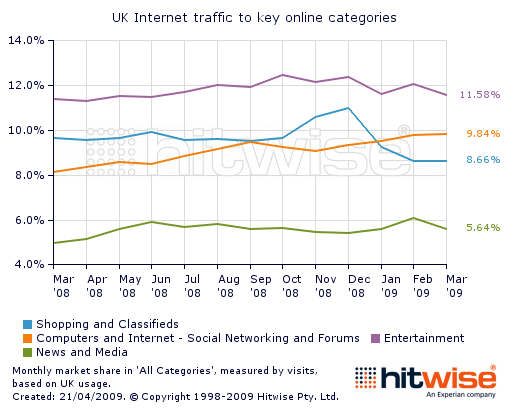 The latest report from Bredin Business Information (BBI) finds that SMB’s will not become customers with the common marketing strategies: Marketers are going online while small and medium-size companies are still living the offline world of direct mail and tradeshows.
The latest report from Bredin Business Information (BBI) finds that SMB’s will not become customers with the common marketing strategies: Marketers are going online while small and medium-size companies are still living the offline world of direct mail and tradeshows.
The two surveys by BBI, conducted in late January and February, combine the findings of 50 leading marketers and 741 SMBs. While marketers were asked about their outreach and research efforts for 2009, the SMBs had to give some insight about their online and offline media preferences, top business issues and brand ratings. The findings show that both sides don’t go and-in-hand to reach their targets.
The marketers world
What marketers know…
SMBs rely less on traditional marketing tactics but that’s one of the top ways they like to receive product and service information.
What marketers do…
Marketers’ spending will increase spending on every online tactic (especially microsites and resource centers, social networking and webinars) but decrease budgets in direct mail, print advertising and trade shows – only PR and telemarketing will increase.
The SMB world
What SMBs rely on offline…
– 43,6% newspaper and magazine articles
– 43,5% direct mail (including letters, postcards and catalogs)
– 32% radio/TV ads
– 27,4% phone calls
What SMBs rely on online…
– 72% online referrals (friends and peers) most popular information source on products and services
– 57% search engine marketing
– 44,5% educational websites
What SMBs favorite in social media…
– 19.7% Facebook
– 15,6% LinkedIn
– 11,3% Twitter
“Marketers are clearly reacting to the difficult economy by using offline tactics much more selectively. They are also moving online aggressively, to reach SMBs efficiently and learn how to get the most from new media opportunities. (…) However, our survey of SMBs indicates that business owners are not nearly as enthusiastic about many online formats for business purposes – such as social networking – as marketers are.” said BBI CEO Stu Richards
Spot On!
The high percentage of marketers more focused on winning new customers than keeping current ones surprises… : 48% balancing their acquisition and retention efforts, 32% concentrating more on acquisition and 20% focusing more on retention. In my experience it is easier keeping clients and trying to meet their needs. Marketers should try to face the difference between customers who really ‘live and communicate the web’, and those that don’t. Going online will be the future, sure, but step-by-step with training the customers the benefits of receiving the information online. Today in some industry sectors, marketers can still put into question the high priority of moving online (3,5 on a scale of 5) and slowing down offline tactics (2,6 on a scale of 5) if the target group is not ready for listening online.
 Three examples how to use social media for medical needs and purposes…
Three examples how to use social media for medical needs and purposes…







